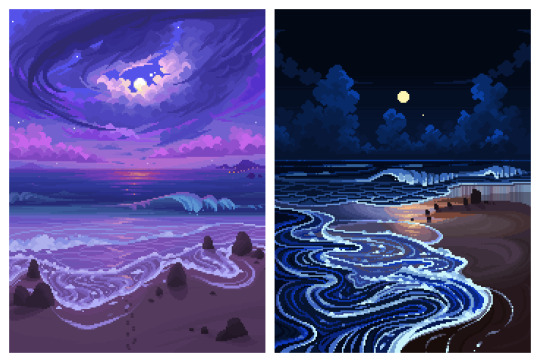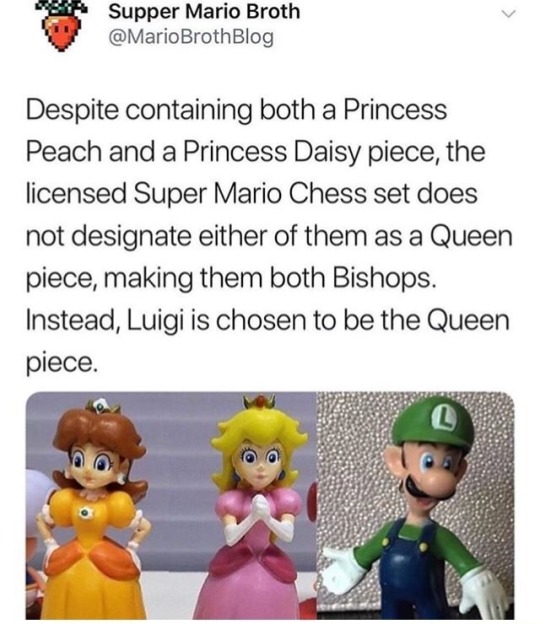Text
Actually boys’ faces belong in my hands where I can squish them and kiss them on the nose and call them good boy and force them to keep looking at me as they get increasingly flustered
220 notes
·
View notes
Text
Well you see minors under 25 years old should not be allowed to get gender reassignment surgery because what if they go to the clinic but instead of giving them a normal penis the nurses mess up and give them the evil penis. That's irreversible
28K notes
·
View notes
Text
actually, I think spiders georg should be counted. just because he's the best at what he does doesn't mean we need to discredit him. he's part of the statistic too
3K notes
·
View notes
Text
Natalie Portman being confused by the fact that you have to say “hi” to someone before starting a conversation in France got me like ?????
108K notes
·
View notes
Text
people need to realise that a poor little meow meow must be a character who has committed atrocities you cannot poor little meow meow a good guy that’s not how this works
148K notes
·
View notes
Text
When I was younger and researching the autism diagnosis criteria and symptoms, I thought “oh I couldn’t POSSIBLY be autistic.” Because when I read “takes everything literally” I thought it literally meant EVERYTHING and I was like “I don’t take EVERYTHING literally, just most things!” And I just realized the other day that it didn’t actually mean EVERYTHING and that was an overstatement.
25K notes
·
View notes
Text
Not to be a Boomer but your social media should be your own space, not something employers are allowed to look at to judge you beyond the qualifications stated in your resume and cover letter
81K notes
·
View notes
Text
alternatives to “i want to die”:
i want things to change
i want a different life
today was a shitty day/week
i don’t want to live like this
i want to be somewhere else in life
i’m not where i want to be yet
+ much more
37K notes
·
View notes
Text
“Impossible” lives and worlds. “Ungrievable” people. Pacific stories. Apocalypse as precedent. Extinction as antecedent. “Nightmare” islands. Controlling time. Imperial futurelessness and Pacific futures. “Who gives a damn?”
—
Pacific texts do not only destabilize inadequate presents. They also transfigure the past by participating in widespread strategies of contesting linear and teleological Western time, whether through Indigenous ontologies of cyclical temporality or postcolonial inhabitations of heterogonous time. To this end Kathy Jetñil-Kijiner’s poetry collection Iep Jaltok mobilizes a layered and accreted temporality, wherein past Pacific injustices, injuries, and indeed formerly impossible futures have not only come to pass but also recur in the present. […] Iep Jaltok does not defer an apocalyptic future. Instead it asserts the possibility, indeed the past guarantee, of Pacific worlds in spite of Western temporal closures. In Iep Jaltok, Jetñil-Kijiner represents Pacific history as a sedimented accumulation that, like Achille Mbembe’s notion of time in the postcolony, “is not a series but an interlocking of presents, pasts, and futures that retain their depths of other presents, pasts, and futures, each age bearing, altering, and maintaining the previous ones”. Such a notion of […] time casts the past as always carried forward into and composing with the present. […] Jetñil-Kijiner situates sea level rise within a longer lineage of impossible futures so that, in Iep Jaltok, extinction becomes part of Pacific history rather than its end. Jetñil-Kijiner’s poetry therefore speaks from the place of an impossible subject, a subject of history whom history was anticipated to wipe out. […]
—
In the context of US settler colonialism, Jessica Hurley has noted “the ongoing power of a white-defined realism to distinguish possible from impossible actions” (778). Discussing the state of exception within which Indigenous tribes exist in the American juridical and political landscape, […] the US exercises “an exclusive uncontestable right to define what will count as a viable legal or political form(ul)ation” (91). In other words, certain aspects of Indigenous life under settler colonialism fall under the purview of what colonizing powers define as the (im)possible. In the Pacific, Euro-American travelers […] have deemed the entirety of Indigenous life impossible for centuries. Pacific scholars have tracked many versions of this impossibility. Some of these discourses invoke the actual physical destruction of islands and the […] death of islanders. Even when they do not, they share in common assumptions of, and thus work to construct the Pacific as, a place and a peoples with no future.
The theory of “fatal impact” (Keown 40) was an early version of the Pacific extinction narrative, based in the actual decimation of islander populations due to the introduction of European diseases in the nineteenth century, Michelle Keown has described the prevalence of “fatal impact” narratives in fin de siècle writing about the Pacific where […] [the] “belief […] gained widespread currency … reinforced by the application of […] theory of natural selection to Indigenous societies.” Writers like Robert Louis Stevenson and Jack London perpetuated such theories and incorporated them into their fiction. And while Pacific populations recovered in the twentieth century, this narrative retained currency in spite of census data to the contrary.
—
Later discourses of Pacific futurelessness focused on the aftermath of Pacific independence movements and targeted Pacific political and economic viability. In this view, the physical smallness and remoteness of Pacific islands from centers of metropolitan capital meant that they were also isolated from the prosperity brought by the global market. Greg Fry, writing of Australian representations of the Pacific in the 1990s, notes that the Pacific was regarded as facing “an approaching ‘doomsday’ or ‘nightmare’ unless Pacific Islanders remake themselves” (25). From the center-periphery model perpetuated by global capital, only a Malthusian “future nightmare of overcrowding, poverty, mass unemployment, serious environmental degradation, and decline in health standards” for Pacific islands seemed possible (26). Unsurprisingly, incorporating Pacific islands into international networks of trade was touted as the appropriate remedy.
Finally, European and American nuclear militarism during the Cold War and after required the Pacific “Basin” (Routes 102) to be represented as an empty space. As numerous scholars have pointed out, the Pacific was chosen for nuclear testing in part because small island populations could be relocated with relative ease and were regarded as “exotic, malleable and, most of all, dispensable” (Teaiwa 20). Bikini Island, where the first of 67 US nuclear tests took place from 1946 to 1958, was chosen largely because of its remoteness from commuter or commercial air and sea routes; nuclear, economic, and demographic priorities thus rendered islanders’ lives “ungrievable” (Butler xiv) and the atolls into a space of inconsequential violence.
—
The latter sentiment was perhaps most famously demonstrated in Henry Kissinger’s dismissal of the Pacific: “There are only 90,000 people out there. Who gives a damn?” (qtd. in Teaiwa 25). Nuclear history epitomizes, though it does not have monopoly over, narratives in which the future of non-Pacific places is produced from the excision of the Pacific from a shared future.
Such narratives were supposed to proclaim and herald the end of Pacific futures. Instead, they constitute a lineage or genealogy of surviving the future, by recording past and ongoing violence between Pacific peoples and Western neocolonialism and militarism. Iep Jaltok shares in this project by embedding extinction narratives within the historical time of [the] Pacific […], Beginning with Marshallese founding myths that include the invention of the sail and the birth of Marshallese seafaring, the collection then moves on to chart postwar Marshallese experience. […] “History Project” opens […] as the speaker, an unnamed Marshallese girl loosely based on Jetñil-Kijiner herself, declares: “time to learn my own history” (20). […] [,] offering a lineage of futures that were never supposed to come to pass […].
Apocalypse as precedent overturns the very world-ending convention of the genre. By turning extinction into antecedent, the ending of the future becomes itself a kind of Pacific worlding, and […] aspires toward an unknown future not tied to an apocalyptic ending.
—
Text above by: Rebecca Oh. “Making Time: Pacific Futures in Kiribati’s Migration with Dignity, Kathy Jetñil-Kijiner’s Iep Jaltok, and Keri Hulme’s Stonefish.” MFS Modern Fiction Studies. Winter 2020. [Italicized first paragraph/heading in this post added by me. Bold emphasis and some paragraph breaks/contractions added by me. Presented here for commentary, teaching, criticism purposes.]
282 notes
·
View notes
Text
prince of egypt is not a christian movie. the exodus is a jewish story. it’s found in other religions, and can even have a heightened level of significance, like for black (specifically african american) christians. but it is a jewish story from jewish scripture written from a jewish perspective about jewish persecution. enjoy it all you want. but don’t go on about how much you love prince of egypt then erase the fundamental jewish spirit of it.
4K notes
·
View notes
Text
the idea that restrooms, locker rooms, etc need to be single-sex spaces in order for women to be safe is patriarchy's way of signalling to men & boys that society doesn't expect them to behave themselves around women. it is directly antifeminist. it would be antifeminist even if trans people did not exist. a feminist society would demand that women should be safe in all spaces even when there are men there.
39K notes
·
View notes
Text




oceanic prisms 🌈✨
buy a wallpaper or leave a tip / twitter / instagram / shop
11K notes
·
View notes
Text
i think the way tiktok and tumblr (yes i am unifying these two sites together for this, for shame!) talk about autism and adhd (n honestly ocd too) as this quirky party trick has really damaged The Youths, at least in america (n they enact that damage on the rest of us, per usual)
like you guys will CONTINUE as usual to mock n harass anyone who is slightly "weird" or "offputting" bc well YOURE autistic and YOU dont do that, so it must be a them problem. well, YOU live on your own and YOU have a job and YOU have tons of friends and YOU go to uni and YOU go to the club and YOU arent weird. its not an "autism thing", this persons just weird. weird for being a picky eater, for using scripts in conversations, for avoiding crowded places n having meltdowns while in them, for living w their parents or in assisted living, for going on about their special interests, for missing social ques, for speaking "weird", for stimming, for having little or no friends, for being unemployed, for having motor issues, for being nonverbal, for not being able to handle the school/academy system, for being autistic.
THEYRE clearly just weird, THEYRE wrong for exhibiting signs and symptoms of autism. their autism is WRONG and WEIRD and OFFPUTTING. YOURE autistic and YOU dont do that, so its clearly "not about autism".
7K notes
·
View notes
Text
"Walkable city" is not "City where to have to walk everywhere."
"Walkable city" is.
Sidewalks big enough to fit you, your stroller, your wheelchair, your guide dog, or anything else you need when you're getting from one place to another.
Safe crosswalks frequent enough so you don't need to walk in traffic.
Bike lanes to keep bikes out of foot traffic and car traffic.
Accessible and affordable public transit.
Cities where the essentials are close enough you can travel on foot (or in wheelchair)
Cities where it's reasonable to be able to get from point a to point b without requiring you, yourself, to drive
People get so caught up in the "Walkable" part of the term and like to spout "Walkable cities are abelist because not everyone can walk".
Bitch. The modern city structure is abelist because not everyone can drive. And classist because not everyone can afford a car and it's pretty damn impossible to get a job if you don't have a car.
Walkable cities are cities where people can reasonably get from pointA to pointB without requiring a motor vehicle.
"But fae. Disabled people have issues using the paths in modern cities." Bitch abled people can barely use the paths in modern cities. That's kind of the fucking problem.
Also walkable cities have fucking benches. Not only for disabled people. But sometimes you just twist your ankle and need to sit for a moment.
"Put fae. If you have benches, homeless people will sleep on them."
Then get fucking housing for the homeless. Problem solved. They'll sleep in their nice warm homes instead of on the benches.
-fae
70K notes
·
View notes
Text
The irony of jokes about clueless “boomers” from Millennials and Gen Z is that we’re at a time where a lot of 60s counterculture elements, political, social and cultural and so on, are having this big resurgence among young people, just under slightly different paint. (We have different names for music that sounds suspiciously similar to 1960s psychedelic rock, for instance, LSD is big but now it’s specifically “microdosing” etc.) And while I think that we have improved on some of the most rancid parts of the 1960s version – like the greater emphasis on meaningful consent, on at least trying to shift focus away from the needs of middle-class white straight men – we still seem to make lots of “workarounds” for this that make it clear there’s a long way to go, like the idea that it’s somehow immoral to reject someone’s sexual advances if they have certain marginalization points over you. And every intra-left debate on Facebook is just recycled from the 1960s, which was recycled from the 1930s before it, which was recycled from the Progressive era… half the time they don’t even update the philosophers they cite!
What inspired this post is my thinking about the resurgence of this quasi-religious investment in astrology, another thing that was huge in the 60s and 70s… I have a book on it from then that reads like one of today’s astrology queers wrote it, just maybe without the mention of “Virgo/Gemini safe spaces.” And that’s a relatively harmless and goofy part of it, but it just feels like the latest drop in the bucket that the apple didn’t fall far from the tree here. And this is why you goofuses need to study history so you don’t repeat its mistakes.
I remember when I was a teenager and super into the sunnier version of 60s counterculture I’d been sold through rock magazines and the kinds of history books you get bought as a kid when you have lefty parents, wishing my generation was more like it because I was frustrated with how apolitical my peers were and how they liked the “wrong” type of music. Well, be careful what you wish for, 14-year-old Rose. The monkey’s paw definitely heard you.
232 notes
·
View notes
Text
I feel like some people need to relearn Genre Expectations... "Man, this tragedy sucks!!! Why didn't they just do XYZ, then everything could have ended happily!!" well, then it wouldn't be a tragedy, would it. "Man, this lighthearted teen romcom is terrible, it's so sappy and unrealistic!!" Well, yeah. If it had been gritty and dark, it wouldn't have been a lighthearted romcom, would it. Is the writing actually bad or are you just trying to order a milkshake from a Home Depot
84K notes
·
View notes
